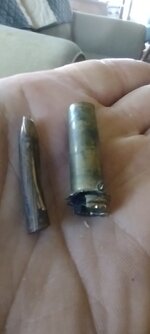- Joined
- Mar 1, 2023
- Messages
- 86
I’ve been reloading for less than two years. I spent a lot of time reading on a bunch of different forums, and watched a lot of videos. I don’t know why this seems like a hard thing to pin down, but I can’t quite figure out how much pressure is too much. And most importantly - why. It seems like the first thing we’d all want to know. I know signs, and I know I’ve been over pressure, but I’d like to know what happens in what order, and what the danger is. Yes, I know death and dismemberment are the dangers, but I’d like to know specifically how and why.
I’ve fired decent amount of rounds that have ejector marks, and I hear guys talk about velocities that are too high and then they say they’re running hot, but they don’t seem to be worried about it. Even Jake from unknown says he’ll load stuff super hot because he doesn’t care how many firings he gets out of the brass, and he knows the action can take it. On the other hand, some guys are extremely wary of getting velocities over book max.
I don’t mind if I only get a few firings out of brass, but I want to know what the real danger is in order of likelihood as pressure increases. I know of case head separation, but I don’t really know what else would happen before that. And I’d really like to know what the dangers are.
Thanks in advance. I know there are a lot of incredibly knowledgeable reloaders on this forum.
I’ve fired decent amount of rounds that have ejector marks, and I hear guys talk about velocities that are too high and then they say they’re running hot, but they don’t seem to be worried about it. Even Jake from unknown says he’ll load stuff super hot because he doesn’t care how many firings he gets out of the brass, and he knows the action can take it. On the other hand, some guys are extremely wary of getting velocities over book max.
I don’t mind if I only get a few firings out of brass, but I want to know what the real danger is in order of likelihood as pressure increases. I know of case head separation, but I don’t really know what else would happen before that. And I’d really like to know what the dangers are.
Thanks in advance. I know there are a lot of incredibly knowledgeable reloaders on this forum.

